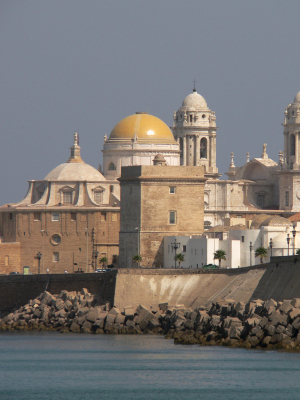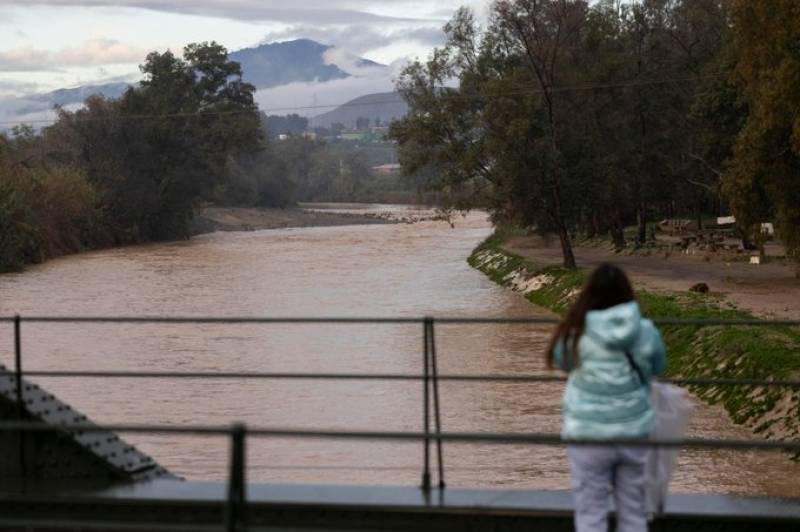- Region
- Vega baja
- Marina Alta
- Marina Baixa
- Alicante
- Baix Vinalopo
- Alto & Mitja Vinalopo
-
ALL TOWNS
- ALICANTE TOWNS
- Albatera
- Alfaz Del Pi
- Alicante City
- Alcoy
- Almoradi
- Benitatxell
- Bigastro
- Benferri
- Benidorm
- Calosa de Segura
- Calpe
- Catral
- Costa Blanca
- Cox
- Daya Vieja
- Denia
- Elche
- Elda
- Granja de Rocamora
- Guardamar del Segura
- Jacarilla
- Los Montesinos
- Orihuela
- Pedreguer
- Pilar de Horadada
- Playa Flamenca
- Quesada
- Rafal
- Redovan
- Rojales
- San Isidro
- Torrevieja
- Comunidad Valenciana
An introduction to the province of Cádiz
The province of Cádiz in Andalucía
Cádiz boasts the wine, horses and flamenco of Jeréz, the iconic windsurfing beach of Tarifa and the Costa de la Luz
 Cádiz is located at the southernmost point of the Iberian Peninsula and the region of Andalucía, occupying an area of over 2,800 square miles and boasting a 162-mile coastline which takes in part of both the Atlantic Ocean and the Mediterranean Sea. This coastline, lying opposite northern Africa, is interrupted only by the British Overseas Territory of Gibraltar.
Cádiz is located at the southernmost point of the Iberian Peninsula and the region of Andalucía, occupying an area of over 2,800 square miles and boasting a 162-mile coastline which takes in part of both the Atlantic Ocean and the Mediterranean Sea. This coastline, lying opposite northern Africa, is interrupted only by the British Overseas Territory of Gibraltar.
The province’s 44 municipalities are divided for many administrative purposes into six administrative areas: the Bahía de Cádiz (which includes Cádiz itself), the Campiña de Jerez (containing Jerez de la Frontera), the Campo de Gibraltar (which includes Algeciras, La Línea and Tarifa), the Bajo Guadalquivir, La Janda and the Sierra de 
Over a million people live in the province, half of them in the area of Cádiz and Jerez, including over 10,000 from the EU and a similar number from the UK as well as many others from South America. These are the latest immigrants in a history which goes back as far as the recorded history of Europe.
Ever since the Phoenicians and Tartessians ruled in the area over 3,000 years ago the historical significance of the area has been dominated by its geographical location as the gateway to the Mediterranean. The ancient city of Gadir was founded in around 1100 BC, and after over 500 years of Moorish rule which 
The importance of the sea continued throughout the following centuries, as the ports served to make it one of the richest and most cosmopolitan areas of Spain. It was partly this influx of ideas from outside which led to Cádiz 
In addition to the mountains of the Sierra de Grazalema and the six nature reserve parks in the province, mention has to be made of the beaches of the Costa de la Luz: due to its location Cádiz boasts white sandy Mediterranean shores as well as the wavy and windy conditions of the Atlantic which make the area of Tarifa a Mecca for surfers and windsurfers.
In artistic terms the province of Cádiz is quintessentially Andalucían, from the Phoenician and Roman remains to the flamenco traditions which still survive today, and the province’s churches, cathedrals and museums 
Apart from its flamenco and classical guitars, Cádiz is also famed for the production of sherry in Jerez, but the seafood, cheeses and desserts are also delicious, and the local wines include far more variety than the reputation of sherry might suggest!
Alongside food and drink it’s inevitable for thoughts to stray to local traditions and fiestas, perhaps the most colourful of which is the carnival celebration in the city of Cádiz itself in the month of February. Like Easter Week,  Carnival is celebrated all over the country, but nowhere on the mainland with such vigour and colour as in Cádiz, and for two weeks both locals and visitors find themselves caught up in the party atmosphere which pervades the streets, where “chingotas” (groups singing comic songs) roam the city centre and a host of other performers make the city appear to be a huge open-air theatre!
Carnival is celebrated all over the country, but nowhere on the mainland with such vigour and colour as in Cádiz, and for two weeks both locals and visitors find themselves caught up in the party atmosphere which pervades the streets, where “chingotas” (groups singing comic songs) roam the city centre and a host of other performers make the city appear to be a huge open-air theatre!
Jeréz is also famous for its Andalucían horses and the annual horse fair is legendary for its music, dancing 
Such are the attractions for visitors that tourism and the services sector nowadays account for two thirds of the province’s economy, the trading ports having decreased in significance despite the continuing power of the bay of Algeciras.






















